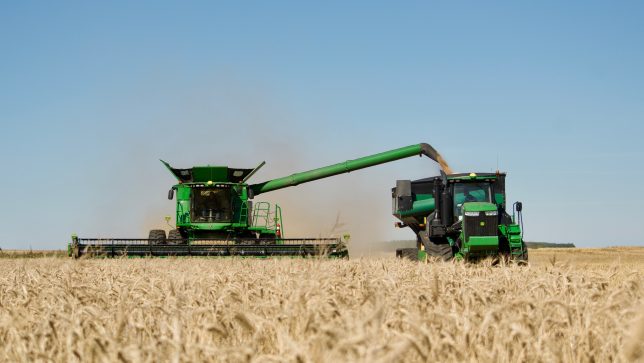Sustainable Pulse - Dec 18, 2019
Sustainable Pulse interview with Axis Farms’ Partner, Mark Sanders, discussing the future of wheat farming in Canada and why they decided it is important to certify their harvest as Glyphosate Residue Free.

Glyphosate Residue Free certification is now being embraced by farmers, ingredient suppliers and brands around the world. You can find the latest certified brands and producers here.
Axis Farms is a 4500 acre conventional wheat farm in Altamont, Manitoba, Canada. Axis Farms is now a 4th generation farm that started in Canada after WWII. Immigrating from Belgium, The Sanders family has always strived to supply the food chain. Today, Axis Farm, the family’s company, is growing and supplying wheat to the food chain.
What brought you and your family into farming?
We started farming because we enjoyed the down to earth lifestyle that farming gives. From tilling the soil, planting seeds, to watching the seedling grow, to timely process of harvesting the crops, to the quieter times in the winter, farming offers a lifestyle that requires patience, endurance, and clear thinking, and the opportunity to experience nature’s beauty.
What crops have you concentrated on producing and why?
We concentrated on producing wheat because wheat is so important in society’s diet. People are turning away from wheat because of gluten intolerance and celiac disease. We believe that the reasons this is happening is the deficiency of plant nutrition when growing in the fields and the amount of chemical residue on the wheat. We grow our wheat with less chemical, and no glyphosate.
Axis Farms is leading a new wave of farmers that are certifying their produce as Glyphosate Residue Free. Can you tell us why you have gone down this path?
We have always felt that it is unnecessary to use glyphosate as a desiccant on wheat. There are other ways to dry the crop before harvest that do not increase the chemical residue on the grain. Today with the links of glyphosate to cancer, it makes the practice of not using glyphosate all the more important.
Does Axis Farms have any other certifications for their high protein hard red spring wheat or any other produce?
None yet, only Glyphosate Residue Free.
What do you believe the future is for wheat farmers in your region?
Wheat is still one of the primary foods for much of the world. But there is pressure to change the demand on wheat because of the health problems linked to it. The future of wheat farming, I believe, is going to have to reduce chemical inputs, as more and more people are turning away from wheat.
It is very important that we generate consumer confidence in the wheat grown in all of North America and that confidence is eroding. We need to make a ‘reduced chemical’ wheat. ‘Reduced chemical’ wheat would not have glyphosate sprayed on it for desiccation; have weeds controlled with minimal chemical inputs; and have plant diseases controlled by soil nutrition and biological sprays. ‘Reduced chemical’ wheat is achievable.
Are there any specific changes in the industry that you would like to see?
We need to build consumer confidence in the wheat supply. Consumers are looking for non-wheat diets and for expensive chemical-free foods (Organic). I want to see an affordable ‘chemical reduced’ wheat supply for the public and for food manufacturers. I want to see a food supply in all restaurants and grocery stores in North America that has items with ‘reduced chemical’ wheat flour that is attainable for everyone.
If you are a food manufacturer or ingredient supplier and you would like to source Glyphosate Residue Free wheat please contact Mark at Axis Farms here.

